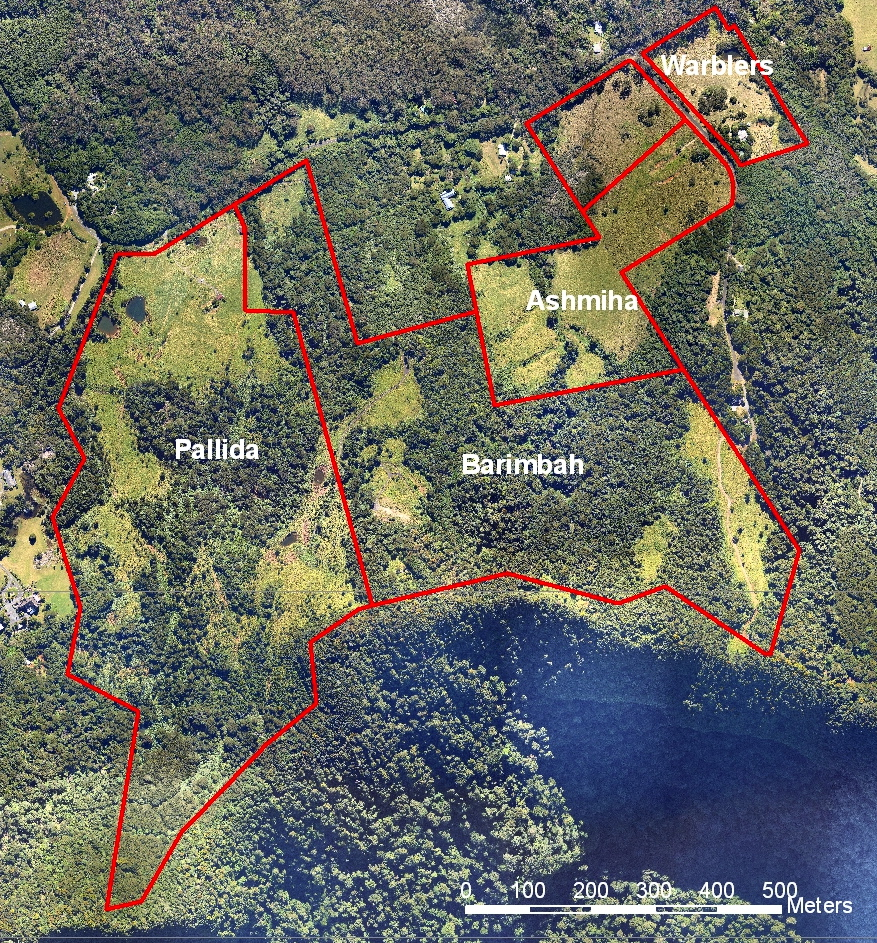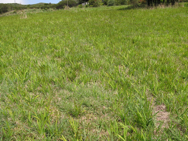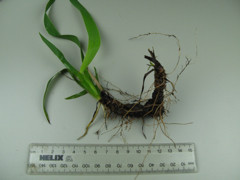 |
Why rainforests? | Who we are | What we do | Places we protect | How you can help | News | Join us | Donate |
Springbrook RescueOn the groundRestoration work on the land gazetted as National Park (recovery) is currently focussed on the high country at the southern end of the Plateau. The properties involved are known as Warblers, Ashmiha, Barimbah and Pallida.   Facilitating natural regeneration The essence of the restoration project is facilitating natural regeneration rather than planting. The overall objective is to restore the original vegetation over a reasonable timescale at a minimal cost per hectare. It is recognised that natural regeneration of rainforest is likely to involve successional stages and may take many decades to re-establish the original vegetation. The initial objective will be to restore a canopy and establish micro-environmental conditions approaching those of the mature rainforest. This will facilitate the recolonisation by fauna contributing to World Heritage values, such as Albert’s Lyrebird and the Logrunner, and help with buffering against the impacts of climate change. Within the timeframe of the Licence, it may be possible only to establish that regeneration is on an appropriate trajectory by comparison of various indicators with those of reference sites in rainforest areas at different stages of regeneration (a chrono-sequence of related sites). The degree of intervention to facilitate natural regeneration will be determined by the need to:
Where areas with early stages of regeneration are identified, they will be assessed in relation to threatening processes such as competition from weeds/grasses and predation by grazing animals (e.g. pademelons) resulting from past clearing, fragmentation and land-use factors. Management actions such as weed removal around plants and temporary fencing will be specified where considered necessary. Weed removal In general, weed infestations will not be addressed unless they are inhibiting natural regeneration without active intervention or there is a legal requirement to remove them (e.g. fireweed, groundsel bush, giant rat’s tail grass). Those weeds occurring on the Properties that will be eradicated naturally by shading from advancing regeneration will not be actively removed, unless it can be demonstrated that medium- to long-term benefits can be achieved regarding site capture, accelerated growth or reduced mortality of regenerating species. It will be recognised that there may be instances where weed/grass control is appropriate for community relations, though this issue would be best addressed through education. Aristea ecklonii, “Blue Stars” When we began work on the Warblers property, Aila Keto discovered a plant which she identified as Aristea ecklonii. This was confirmed by the Queensland Herbarium and represented the first record in Queensland. A member of the Iris family, it is a highly threatening weed from South Africa and Madagascar. It grows in the shade as well as in full sun and forms a dense, smothering ground cover. It has the ability to invade forests and form a ground cover that prevents regeneration of seedlings, thus potentially causing the demise of the forest when the canopy trees die. Eradicating Aristea has necessarily become a major focus for the restoration project. It produces rhizomes (modified roots) from which it regenerates even if the above-ground plant is destroyed. Herbicide treatment does not reliably kill the rhizomes. Digging up the plants with their rhizomes is the most effective method of control.    A lawn of Aristea on Warblers A rhizome of Aristea Aristea can form a fibrous root mass
|